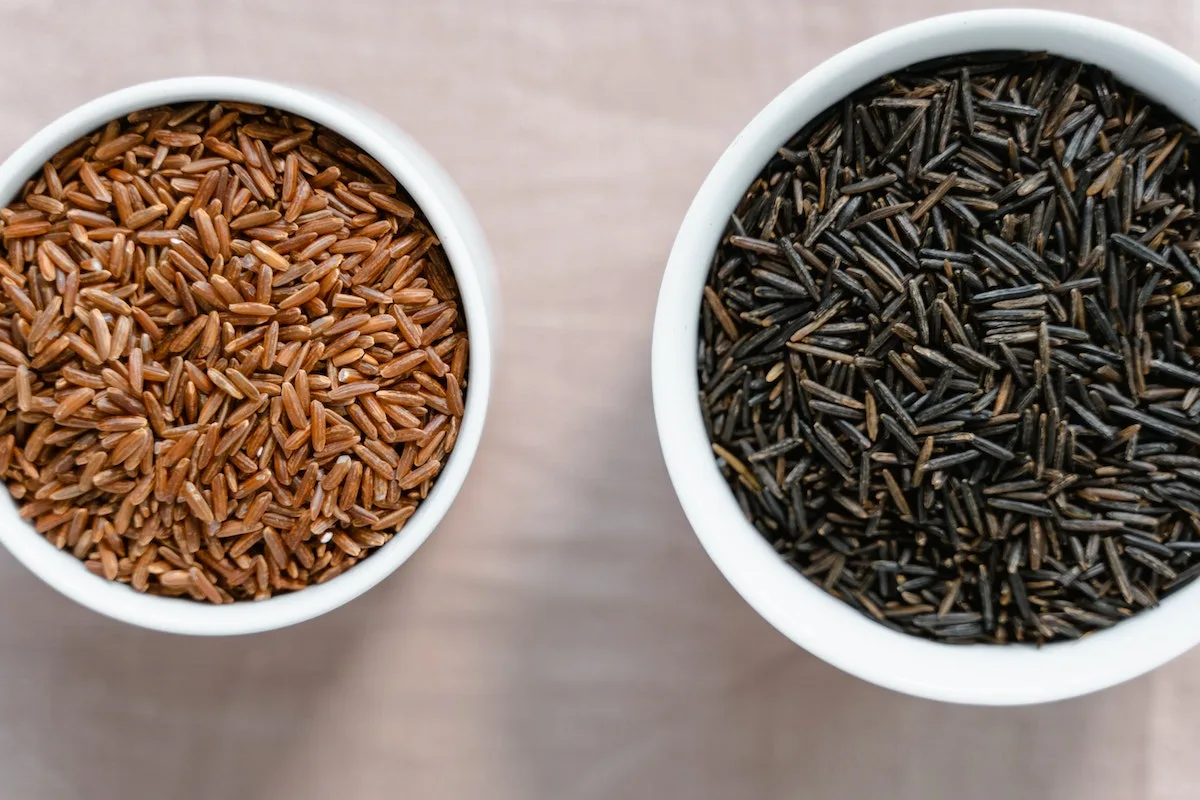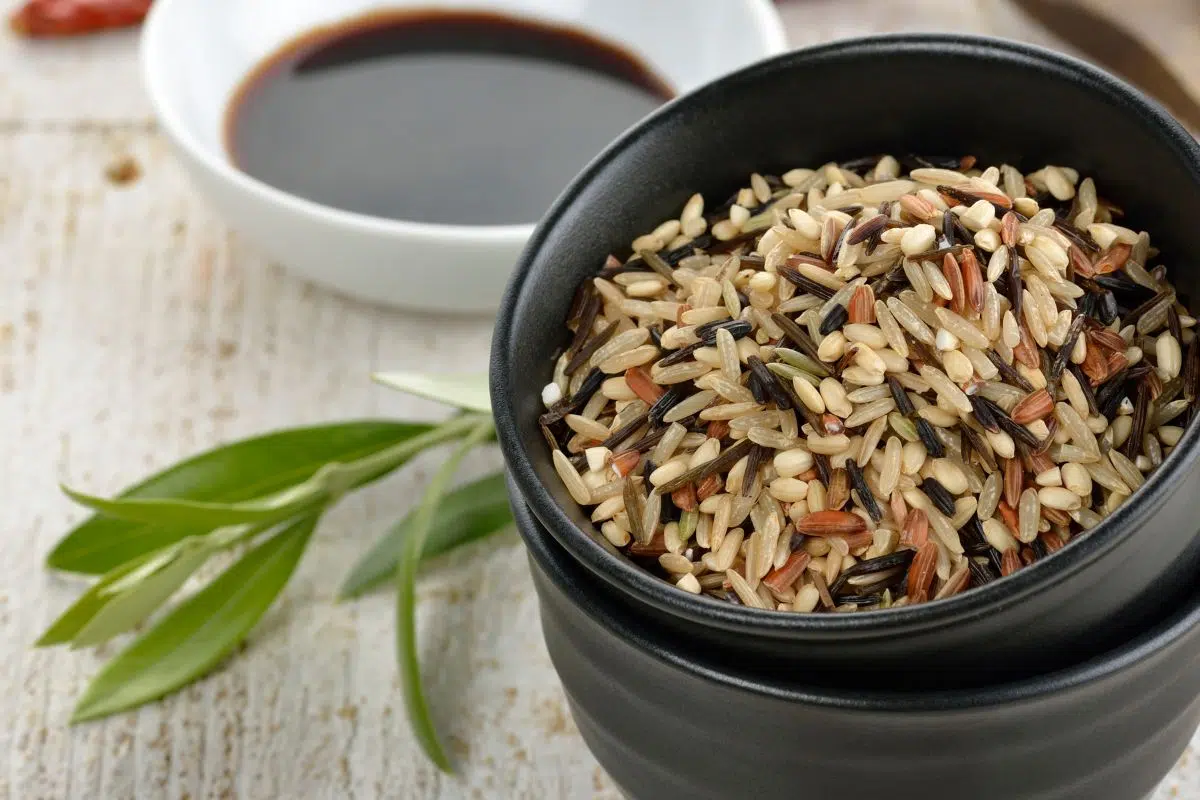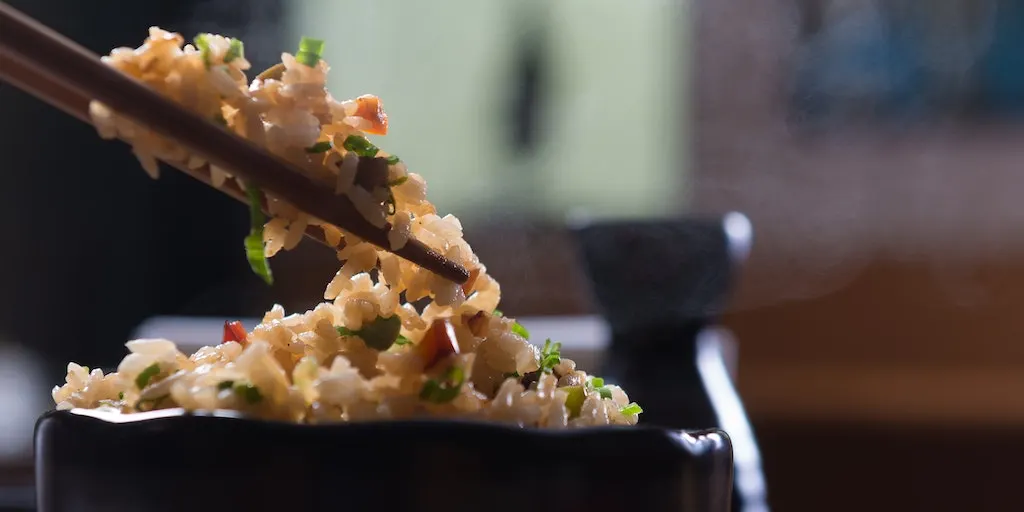If you have ever seen wild rice in the grocery store or mentioned in a recipe you may have wondered what is wild rice and how it is different from other rice varieties.

We are going to take a look at whether wild rice is really rice, what varieties there are and its nutritional value. We explore what it tastes like, how it is grown and harvested, and finally, how to safely store wild rice.
Is Wild Rice Really Rice?
Despite its commonly known name, wild rice is not technically a rice.
In fact, it is an aquatic grass seed which has been cultivated and eaten for many centuries.
The plants grow in shallow water such as freshwater marshes and in small lakes or slow flowing streams.
Wild rice is not directly related to domesticated rice, but they do belong to the same tribe of Oryzeae.
A tribe in biology forms part of the taxonomic ranking, it is above genus but below both family and subfamily.
The reason wild rice is called a rice rather than a grass seed is because it resembles rice in appearance and is cooked in a similar way.
Wild rice is also called water oats, unsurprisingly, but is also known as manoomin, Indian rice, and Canada rice.
Wild Rice Varieties
There are four different species of wild rice.
Three are native to North America and one grows in Asia and is harvested not for its seeds but for its stem which is eaten as a vegetable.
This is known as Manchurian wild rice.
Northern wild rice or zizania palustris grows naturally in the Great Lakes region, as well as in areas of Canada such as Manitoba and in Michigan, Idaho, Wisconsin and Minnesota.
It is an annual plant.
Wild rice or zizania aquatica is also an annual plant that grows in Florida, on the Gulf and Atlantic coasts as well as along the Saint Lawrence River.
The perennial Texas wild rice makes no secret about where it’s from and is found in a relatively small area in central Texas along the San Marco River.
However, this variety is in danger of extinction as a result of the loss of suitable habitats.
Pollen from the Texas wild rice plant can only travel about thirty inches from the parent plant.
If there is no receptive female flower in the vicinity then no seeds are produced.

What Does Wild Rice Taste Like?
Wild rice has a slightly chewier outer sheath and the internal seed, which is soft, has a subtle vegetal taste. The harder outer casing of the seed means that wild rice needs to be cooked for longer than other types of rice.
The texture of wild rice is firmer and the taste has a slightly nutty flavor.
It is often mixed with other types of rice as the long thin black seeds are a nice contrast to white and brown rice. Its culinary uses include stuffing for meat, soups and as a side dish.
When cooked, wild rice will expand to three times its uncooked size, so one cup of dried rice will give you three cups of cooked rice.
This is one reason why it is useful as a stuffing.
The thicker and more rigid hull of wild rice seeds give it a nice chewy texture, as long as it is not overcooked. For this reason it can be added to casserole dishes and soups.
It adds an earthy taste which is pleasant and not overwhelming.
Is Wild Rice Good For You?

Nutritional analysis of wild rice shows that it is second only to oats in protein content per 100 calories. It is also high in lysine, an amino acid and dietary fiber.
Like other rice it is low in fat and does not contain gluten.
Eating one cup of cooked wild rice will provide 20% of the daily value of manganese, 15% of zinc, 10% of folate, magnesium and vitamin B6 and 5% of potassium and iron.
As wild rice is a seed from marsh grass it is not refined or polished, so it is eaten in its maximum nutritional state. It is ideal for those on a grain free diet.
Wild rice is prone to infection by a fungus called ergot which is highly toxic and dangerous to humans if eaten.
The fungus presents as pink to purple blotches or fungus growth on the seeds.
How Is Wild Rice Harvested?
Despite its name wild rice is not harvested from the wild but is cultivated in very specific habitats.
It grows best in gently flowing waters where the water levels are stable for the duration of the growing season.
The ideal depth is between six inches and 36 inches with an organic bottom.
This type of habitat is typically found close to the outlet or inlet of a lake.
The conditions that the wild rice grows in affects how it ripens and when.
An acre of rice beds with optimum conditions can produce more than 500 pounds of grains.
However if harvesting by hand only 10-15% of this amount will be captured.
The harvesting of wild rice is strictly regulated in places like Wisconsin where it is illegal to harvest the grain between sunset and 10am.
On Native American reservations the harvesting of wild rice is limited to tribal members and subject to tribal authorities.
Storing Wild Rice
Dry wild rice will keep for years if it is stored properly in an airtight container and not allowed to get damp. It should be kept in a cool, dark place such as a pantry or cupboard.
Once cooked wild rice should be consumed as soon as possible but can be stored in the refrigerator for 4–6 days.
Freezing is a great way to preserve cooked wild rice, and it will keep safely in the freezer for up to six months.
Final Thoughts
We hope that you have enjoyed this guide to wild rice and that it has been informative for you.

Ingredients
- 1 cup wild rice
- 1 tablespoon olive oil
- 1 onion finely chopped
- 1 clove garlic finely chopped
- 2 1/2 cups chicken stock
- 2 tablespoons unsalted butter
- 1 1/2 teaspoons kosher salt
Instructions
- Rinse the wild rice under running water to remove any debris or dust.
- In a medium saucepan, heat the olive oil over medium-high heat. Add the chopped onion and garlic and cook until the onion is translucent, stirring occasionally.
- Add the wild rice to the saucepan and cook for 1-2 minutes, stirring constantly.
- Pour in the chicken stock, add the butter and salt, and bring the mixture to a boil.
- Reduce the heat to low, cover the saucepan with a lid and simmer for 45-50 minutes or until the rice is tender and most of the liquid has been absorbed.
- Remove the saucepan from heat and let it sit for 5-10 minutes, covered.
- Fluff the rice with a fork and transfer it to a serving dish.
- Garnish with chopped fresh parsley and serve.
